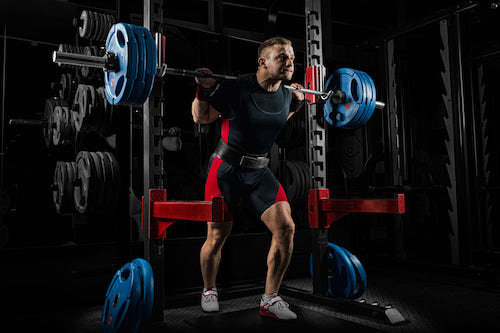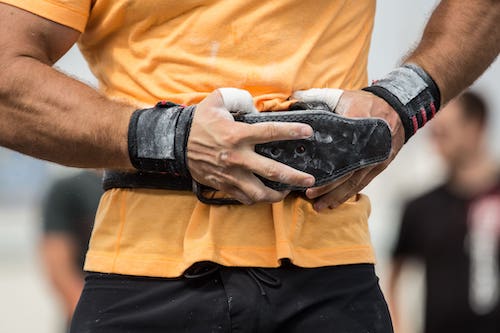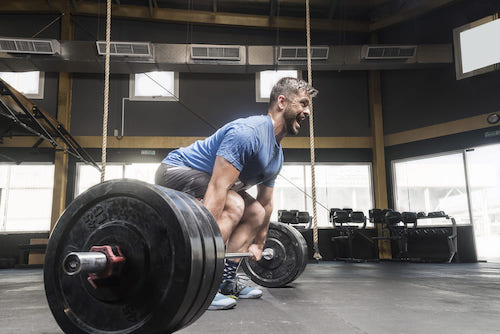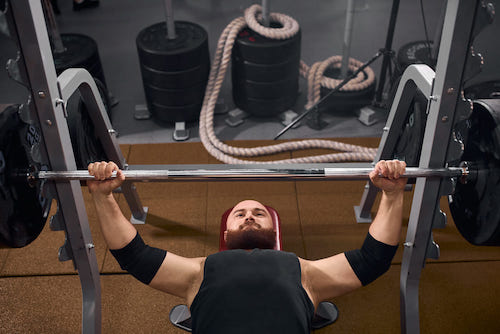Your cart is empty
Start Shopping
If you head into your local gym, you will likely see nylon or leather lifting belts floating around the weight-lifting section. While both options are excellent at reducing the strain on your lower back and helping you maintain good posture, you must be aware of each belt’s pros and cons.
Why the Debate Between Nylon and Leather?
The leather vs. nylon lifting belt debate remains one of the most popular arguments among gym crowds, with most lifters camping on either side of the fence. However, while both belts offer advantages and disadvantages, the strap you choose will likely depend on your fitness goals and the comfort level you prefer to have while lifting.
What is a Nylon Lifting Belt?
This belt often takes a nylon form, with users wrapping it around the base of their torso for improved posture and comfort while lifting. One of the core reasons this belt has become so popular over the years is its soft base and ability to morph according to your shape. These features tend to make the weight-lifting experience smoother and more comfortable, making this belt the go-to option for most beginners.
What Are the Advantages of a Nylon Lifting Belt?
- It is very Comfortable: Nylon belts have the unique property of allowing you to carry heavy weights comfortably due to the soft belt material. Using nylon to aid your lifting also means that you will not feel any additional pressure during your repetitions, making for a more comfortable but rewarding gym session.
- Better Range of Motion: One of the best benefits of nylon belts is their ability to take the shape of your torso while lifting. This distinct feature means that you should effortlessly be able to move through different lifting postures without feeling any rigidity.
What Are the Disadvantages of a Nylon Belt?
- The material may cut or rip: While you can always be confident of better comfort when using a nylon lifting belt, this material is far more likely to rip or break than others. This likelihood of your belt ripping can also put you in danger, as your strap tearing in the middle of a deadlift or squatting session could quickly lead to traumatic injury.
- Velcro Straps Wear Off With Heavy Use: One of the most common issues with nylon belts is that the straps that hold them together often begin to wear off over time with heavy use. Unfortunately, once these straps stop working effectively, you may have no choice but to get hold of a new belt.

What is a Leather Lifting Belt?
The leather lifting belt is often synonymous with heavy-weight lifters due to its durability, sturdiness, and incredible posture support. These features make this belt one of the most reliable straps you can grab.
What are the Advantages of a Leather Lifting Belt?
- It Supports Heavy Lifting: The ability for leather belts to support very heavy lifting workloads will always make them standout and ensure that they are the go-to strap for professional lifters. Today, you can easily find belts that support over 500 pounds, so any fears of your belt ripping during your set should be as far away from your mind as possible.
- Durable: One of the best features of leather belts is the level of support they can provide while lifting due to their increased durability. This sturdiness means that you should be able to use them for a significantly long time before thinking of buying replacements.
What are the Disadvantages of a Leather Belt for Lifting?
- Tend to be Expensive: Unfortunately, leather lifting belts are generally more expensive than other alternatives due to the leather cost, padding, and stitchwork that goes into the final product. However, while a leather belt may initially dent your wallet, it will always prove value for money over time.
- More Uncomfortable: While leather belts should help increase the total weight you can lift, you will need to sacrifice your range of motion. Most leather straps also tend to bite into the skin around your hips, so we don’t recommend wearing them for extended periods.
Top Differences Between Nylon and Leather Lifting Belts
Material
The core difference between leather and nylon lifting belts lies in their materials. Nylon is soft and free, which means that these belts tend to feel nice on the skin and do not add any excess pressure onto the torso. Meanwhile, leather belt makers use several layers of leather to craft a strap before putting it together with a single or double stitch. In most cases, the leather option will contain more durable materials than the nylon lifting belt, so we only recommend choosing it if durability and heavy lifting are crucial to you.
Buckle System
These belts also have different buckle systems. If you choose leather for your weight-lifting assistance, you can select either a lever or a single, double, or triple-prong system for your buckles. In most cases, these prongs are made of stainless steel, and the straps already have holes like a regular belt, so slipping it on should be a piece of cake.
On the other hand, while some nylon lifting belts may use stainless steel for buckling up, they tend to ignore the prong system. Instead, you can adjust the belt by pulling it tighter or looser. Some nylon belts may also have a Velcro strap for quick adjustment.

Use Case
The leather lifting belt will always be your best friend if you partake in fitness competitions or can lift more than the average gym-goer. The durability of the straps and their ability to provide support even when carrying heavier weights means that you will never have to worry about issues, such as the belt ripping or tearing.
However, if you favor comfort while lifting or perform lifting exercises requiring a better range of motion, we suggest using the nylon belt instead. This belt will always be better for recreational lifters and beginners just stepping into the weight-lifting world.
Leather or Nylon Weightlifting Belt? Which Should You Choose?
The type of belt you choose will always depend on how much weight you will be carrying. In most cases, powerlifters and strongmen athletes will always favor the leather belt due to its tremendous durability and ability to withstand heavier weights. Meanwhile, more casual weightlifters and general fitness athletes often opt for the nylon option due to its increased range of motion and better comfort.



